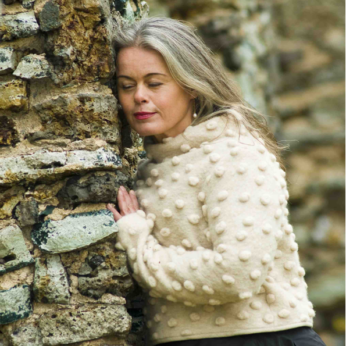Composer: Claudio Monteverdi (b. 1567 - d. 1643)
Performance date: 29/06/2014
Venue: St. Brendan’s Church
Composition Year: 1607
Duration: 00:06:00
Recording Engineer: Richard McCullough, RTE
Instrumentation Category:Small Mixed Ensemble
Instrumentation Other: S-solo, 3vn, va, vc, db, lu
Artists:
Concerto Copenhagen (Peter Spissky, Fredrik From, Antina Hugosson [violins], Torbjörn Köhl [viola], Kate Hearne [cello], Mattias Frostenson [bass], Fredrik Bock [archlute, guitar], Lars-Ulrik Mortensen [harpsichord, director]) -
[baroque ensemble]
Maria Keohane -
[soprano]

Monteverdi’s Orfeo occupies a supremely important
position in the history of music, and it is widely considered the first great
opera, being one of the earliest examples of the new operatic form. The fact
that the work still holds a well loved place in the opera repertory of the 21st
century is testament to its continuing ability to move and affect the audience.
As a composer, Monteverdi’s output marks the transition from the Renaissance
style of music to that of the Baroque, and Orfeo
shows signs of both styles. The opera was commissioned by a wealthy group of
Mantuan nobility known as the Accademia
degli Invaghiti, which provided the outlet for many of the city’s
theatrical works. One of the members of this group was the young lawyer and
diplomat Striggio, and being a good friend of Monteverdi’s and a talented
musician, he became responsible for the libretto of Orfeo. The prologue opens the opera, being preceded only by a short
flourishing toccata for brass and strings. The passage into Monteverdi’s
make-believe world, where all communication happens through song, is presented
to us through an allegorical character who personifies La Musica, or music. Music pays compliments to the audience and
announces that she can, through sweet sounds, calm every troubled heart. After introducing the main protagonist
of the opera, Orfeo, she bids the audience to stay silent for the performance
to follow. The prologue takes the form of five declamatory verses in recitative
style for voice and continuo interspersed with instrumental ritornelli that Monteverdi
reintroduces several times later in the opera, lest we forget the enduring
power of music.
position in the history of music, and it is widely considered the first great
opera, being one of the earliest examples of the new operatic form. The fact
that the work still holds a well loved place in the opera repertory of the 21st
century is testament to its continuing ability to move and affect the audience.
As a composer, Monteverdi’s output marks the transition from the Renaissance
style of music to that of the Baroque, and Orfeo
shows signs of both styles. The opera was commissioned by a wealthy group of
Mantuan nobility known as the Accademia
degli Invaghiti, which provided the outlet for many of the city’s
theatrical works. One of the members of this group was the young lawyer and
diplomat Striggio, and being a good friend of Monteverdi’s and a talented
musician, he became responsible for the libretto of Orfeo. The prologue opens the opera, being preceded only by a short
flourishing toccata for brass and strings. The passage into Monteverdi’s
make-believe world, where all communication happens through song, is presented
to us through an allegorical character who personifies La Musica, or music. Music pays compliments to the audience and
announces that she can, through sweet sounds, calm every troubled heart. After introducing the main protagonist
of the opera, Orfeo, she bids the audience to stay silent for the performance
to follow. The prologue takes the form of five declamatory verses in recitative
style for voice and continuo interspersed with instrumental ritornelli that Monteverdi
reintroduces several times later in the opera, lest we forget the enduring
power of music.
Copyright © 2026 West Cork Music. All rights reserved.
Designed and developed by Matrix Internet